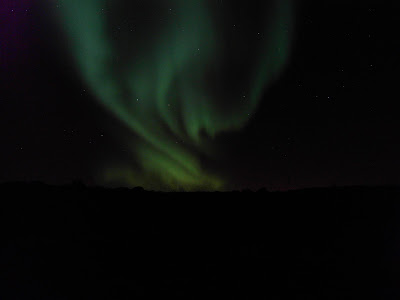See, I told you! (P.S. Again, none of these pictures are mine - I haven't had the pleasure of seeing one of these guys in the wild - so hopefully my blog site won't get shut down!)


I have learned some interesting things about them though. The walrus is a relatively long-lived, social animal and is considered a keystone species in Arctic marine ecosystems. Adult male walrus can weigh up to 3,700 lb - females weigh about two-thirds as much – making them the second largest pinniped (fin-footed mammals – seals and walrus), after elephant seals. Their blubber layer is up to 15 cm (5.9 in) thick!
They live primarily in shallow oceanic shelf habitat, spending a significant proportion of their lives on sea ice in pursuit of their preferred diet of molluscs, especially clams. They forage on the bottom using their sensitive whiskers. They suck meat from clams by sealing their powerful lips around them. The walrus has an air sac under its throat which acts like a floatation bubble and allows it to bob vertically in the water and sleep.
Gestation lasts 15 to 16 months and walrus make excellent mothers - they will defend their young fiercely. I have heard stories of mothers clutching their young close to their bodies and hiding them beneath them in the water when hunters approach. Calves weigh 100–170lb at birth and are able to swim immediately. The mothers nurse for over a year before weaning, but the young can spend up to 3 to 5 years with the mothers.

Look at those whiskers! They actually make earrings up here out of walrus whiskers and they are surprisingly nice!

The walrus has played a prominent role in the cultures of many indigenous Arctic peoples, who have hunted walrus for their meat, fat, skin, tusks and bone. Traditional hunters used all parts of the walrus. The meat, often preserved, is an important winter nutrition source; the flippers are fermented and stored as a delicacy until spring (I have also heard about fermented walrus head, also considered a delicacy); tusks and bone were historically used for tools as well as material for handicrafts; the oil was rendered for warmth and light; the tough hide made rope and house and boat coverings; the intestines and gut linings made waterproof parkas, etc. While some of these uses have faded with access to alternative technologies, walrus meat remains an important part of local diets, and tusk carving and engraving remain a vital art form.
In the 19th and early 20th centuries, the walrus was the object of heavy commercial exploitation for blubber and ivory and its numbers declined rapidly. The Atlantic Walrus was nearly eradicated by commercial harvest and has a much smaller population than the Pacific Walrus; today their population is probably below 20,000.
The males possess a large baculum up to 63 cm (25 in) in length, the largest of any land mammal both in absolute size and relative to body size. What’s a baculum, you ask? A baculum is a bone found in the penis of most mammals – I know right? I was very surprised the first time I heard about baculums during my undergrad. It is absent in humans – this shouldn’t come as a surprise - but present in other primates, including the closely-related chimpanzee.
Walrus baculum

Oosik is a term used in Native Alaska cultures to describe the baculum of walruses, seals, sea lions, and polar bears. The oosik is a polished and sometimes carved baculum of these large northern carnivores, sold as souvenirs to tourists by Alaska Natives. In 2007 a 4.5-foot (1.4 m) long fossilized penis bone from an extinct species of walrus, believed by the seller to be the largest in existence, was sold for $8,000. I was reviewing hunt plans for walrus and was surprised to see the baculum as one of the trophies for sport hunters to keep, along with the tusks and hides. Sport hunters pay a lot of money to come to Nunavut to hunt walrus; the communities keep the meat.
Giant fossilized walrus baculum... how big was the walrus!!!








